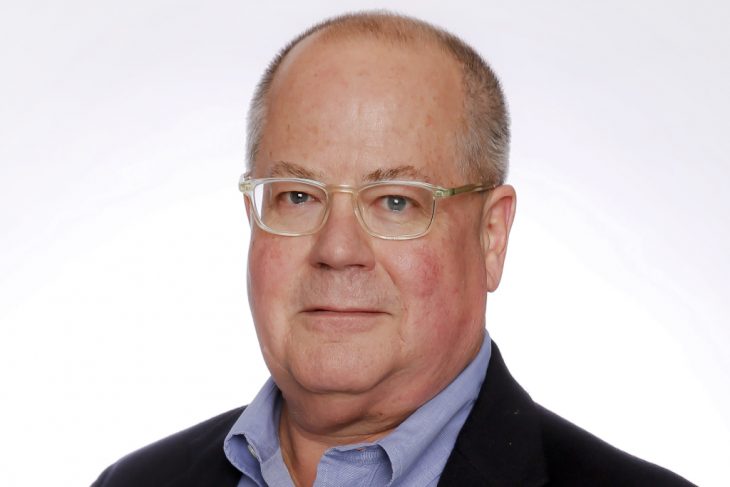
By Douglas Barrett, featured above, adjunct professor in the arts, media and entertainment MBA program at the Schulich School of Business at York University.
As some wags have said, now that bill C-11 has become the Online Streaming Act, the real fun begins. That’s because the CRTC will be put in a position to make most of the “rubber meets the road” decisions based on the policies outlined in the Act. This is no easy task.
Strangely, to me anyway, despite months and months of debate around the topic, we have yet to see any models that specifically outline just what the new streamer investment should be and how it would be carried into the system.
To address this, I have a modest proposal. To be clear, I am not proffering that this proposal is the only way to go. I am merely suggesting that it is a way to go, a way that is consistent with and is based upon the commission’s current approach to managing Canadian content obligations.
Despite the expectation that the discussion will be around the Canadian program definition regulated by the CRTC, my proposal focusses on PNI or Programs of National Interest. In fact, for the purpose of this discussion, I am going to assume that the specifics of both the certification system managed by the Canadian Audio-Visual Certification Office (CAVCO) and the CRTC will remain largely unchanged.
It is well known that the commission has imposed on licensed Canadian broadcasters who are members of the major corporate groups an obligation to spend a percentage of their gross revenues on PNI. The required spend determined by the commission ranges from roughly 5 to 9 per cent.
So, my first proposal is that the commission should similarly determine a percentage of steamer income derived from the Canadian market and require it to be spent annually on PNI.
I have no specific view at this time as to how the percentage should be determined but would point out that Canadian broadcasters also have an overall requirement to spend 30 per cent of their previous year’s revenues on Canadian programs, which includes material outside the PNI genres. As most of what the streamers offer is in the PNI category, the PNI benchmarks imposed on Canadian broadcasters may not be an appropriate precedent. Perhaps something more generous should be considered.
What is PNI? For the commission, it’s programs in the drama and long-form documentary genres along with certain awards shows. These genre descriptions match formal CRTC program category definitions. The commission is silent on just how Canadian any of these programs must be, other than to presume that they would pass one of the Canadian content certification regimes.
As a practical matter, however, and as an example of what I call Fuzzy Regulation, virtually no PNI programs can be made without the financial support of the Canada Media Fund (CMF). The economics are just not there. This means that the CMF funding eligibility rules, rather than those of the CRTC, actually drive what a PNI program is.
For its part, the CMF limits eligibility to programs certified by CAVCO as being 10 out of 10 and shot and set in Canada. Consequently, virtually all PNI programs currently being made are certified by CAVCO and meet the 10 out of 10, shot and set rule. The CMF itself does not accept CRTC certification for eligibility purposes.
So, my second proposal is for the CRTC to sharpen its definition of PNI programs so that it exactly matches that of the CMF. And if, because of its current national consultation process, the CMF clarifies what it means by “shot and set,” the CRTC should follow suit. In this manner, Fuzzy Regulation would become formal regulation. In the circumstances, this shift should theoretically not impact or upset the licensed broadcast community. It simply formalizes what is already the norm.
My third proposal is that the commission use the same approach with streamers as it has with Canadian broadcasters: no less than 75 per cent of PNI spend must be made on programs produced by independent Canadian producers. These programs should also be certified by CAVCO rather than the CRTC.
Why is CAVCO certification important? The process managed by CAVCO has rigorous producer controls, but in addition requires that the Canadian producer owns the copyright, has a meaningful ownership interest in the underlying rights, and a minimum profit share. By contrast, while the CRTC system has similar producer controls, it does not require the producer to own copyright or have a material ownership interest. In addition, the CAVCO system is authorized under the Income Tax Act and its regulations, and certified programs are entitled to the Canadian Film or Video Production Tax Credit. Programs certified by the CRTC are not so entitled but can access the less generous Film or Video Production Services Tax Credit.
So, assuming that no less than 75 per cent of PNI is produced by independent Canadian producers, what would happen with the other 25 per cent? For that piece, if the streamer so wished, the programs could meet the less rigorous CRTC test: the requirement for Canadian producer control would remain, but the copyright and distribution rights could be owned and controlled by the streamer and the tax credit would be less generous.
To summarize, under my proposal, streamers would be obligated to spend a percentage of their declared gross Canadian revenues (subscription and advertising) on PNI, all of which would be required to meet the 10 out of 10 points test and be shot and set in Canada (or as the “shot and set” test is refined or redefined). At least 75 per cent of that spend would be produced by independent Canadian producers and meet the CAVCO certification test. The remainder could meet the CRTC test.
This proposal builds on the regulatory practices already established by the commission and in operation for a number of years.
Canadian broadcasters have consistently asked for a level playing field with the streamers, and I believe this proposal does the trick – with a few small adjustments to reflect the current reality on the ground.
To give credit where credit is due, the underlying inspiration for this proposal is not mine: it comes from a summer dinner with my cottage neighbour, Nick Ketchum, for two decades a senior director at the CRTC but now long retired. He’s a very inciteful and useful neighbour! Oh, and fun.



